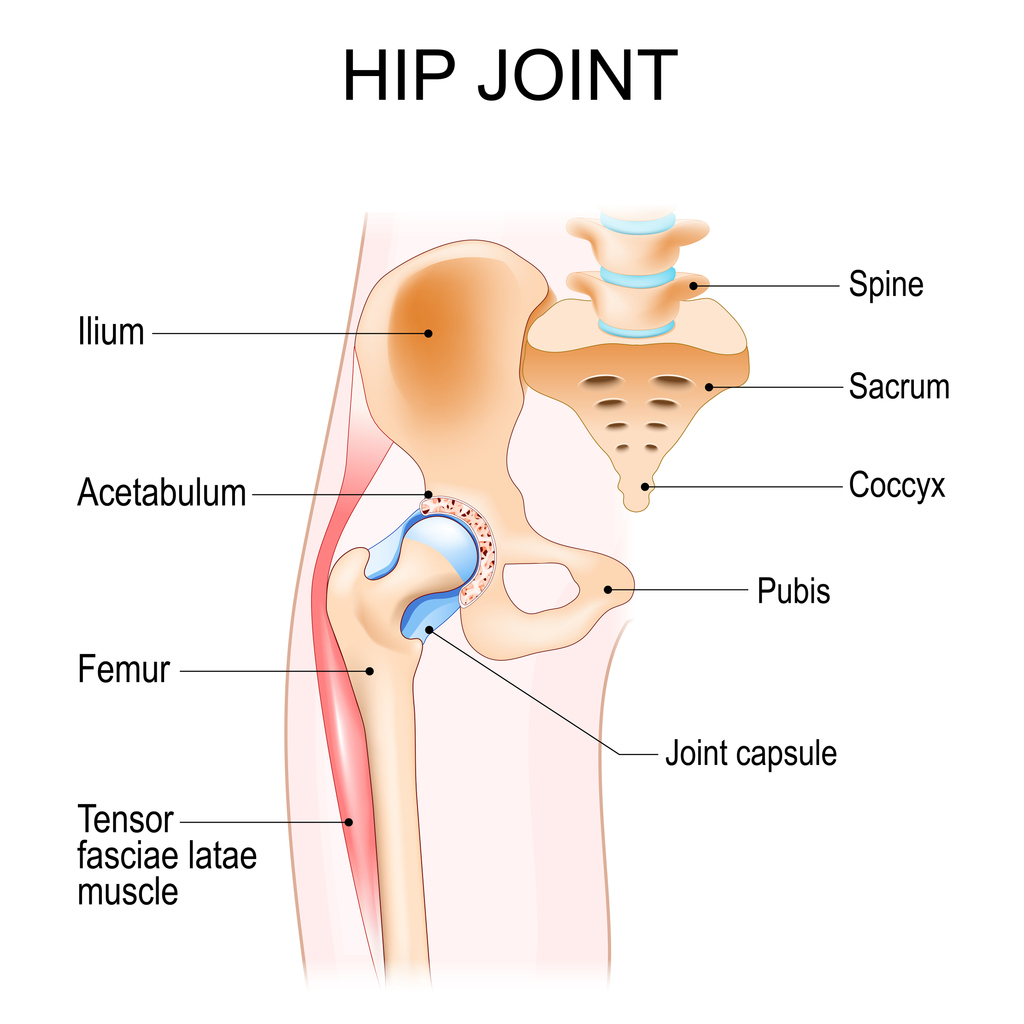Hip stress fractures often happen to athletes, active people, and older adults. These fractures, often called fatigue fractures, occur when the bone is subjected to repetitive stress or overuse, resulting in tiny cracks or breaks. Stress fractures form slowly, unlike traumatic fractures from a fall or impact. This gradual development makes them harder to spot at first. These fractures might seem minor, but can cause serious problems if left untreated.
What Are Hip Stress Fractures?
Hip stress fractures typically affect the femoral neck, the area of the thigh bone near the hip joint. This part of the bone is responsible for bearing a significant portion of the body’s weight during movement. Hip stress fractures often occur in people who do high-impact activities. This includes long-distance running, dancing, and sports like basketball and soccer. Stress fractures form gradually. They happen from repeated stress on the bone, not from one injury. Too much exercise, wrong technique, or sudden changes in activity can increase the chance of a hip stress fracture.

Symptoms of Hip Stress Fractures
The symptoms of a hip stress fracture can vary depending on the severity of the fracture. In many cases, the symptoms may develop gradually and worsen over time. Common signs and symptoms of a hip stress fracture include:
- Pain in the Hip or Groin: The most common symptom of a hip stress fracture is pain in the hip or groin area, especially during physical activity. The pain may start as mild and become more intense with continued use of the affected leg. This discomfort often increases with weight-bearing activities, such as walking or running.
- Tenderness in the Hip: When pressure is applied to the area around the hip joint, it may feel tender to the touch. This is a sign of inflammation and irritation in the bone due to the fracture.
- Pain with Movement: People with hip stress fractures often feel pain when they walk, run, or stand. Sometimes, the pain can be sharp and intense, especially if the fracture worsens.
- Swelling and Bruising: While less common with stress fractures than traumatic fractures, swelling or bruising around the hip joint may occur. This could indicate irritation and inflammation due to the stress fracture.
- Difficulty Weight-Bearing: In advanced cases, the person may struggle to put weight on the affected leg or may limp when walking. This is typically a result of significant pain or instability caused by the fracture.

Risk Factors
Several factors can contribute to the development of a hip stress fracture. Some of the most common risk factors include:
- Repetitive High-Impact Activity: Running, jumping, and dancing can put stress on the hips. This stress may lead to fractures over time. Athletes and others in high-impact activities often get stress fractures. This happens because their bones face repeated strain.
- Poor Bone Density: Conditions like osteoporosis weaken bones, making them more vulnerable to fractures. Low bone density reduces the body’s ability to withstand stress, increasing the risk of injury.
- Improper Footwear or Technique: Wearing bad shoes or using poor form can stress the hips. This increases the risk of stress fractures. Proper footwear and good form are key to preventing injuries.
- Sudden Increase in Activity: When you suddenly boost your physical activity, it can stress the bones and cause fractures. Gradually increasing exercise intensity allows bones to adapt and reduce the risk of injury.
- Age and Gender: Aging and hormonal shifts reduce bone density, especially in postmenopausal women. This makes bones more fragile and prone to stress fractures. Older adults are generally at higher risk due to these changes.
How Are Hip Stress Fractures Diagnosed?
To diagnose a hip stress fracture, doctors first do a physical exam. They also review the patient’s medical history. This includes checking their activity level and recent changes in exercise. During the physical exam, your doctor may assess the hip for tenderness, swelling, and range of motion.

If a stress fracture is suspected, imaging tests are often necessary for confirmation. X-rays are usually the first step, though they may not always detect stress fractures in the early stages. Sometimes, doctors use an MRI (Magnetic Resonance Imaging) or a CT scan (Computed Tomography). These scans give clearer images and can spot hairline fractures that X-rays might miss. Also, a bone scan may be suggested to find stress fractures in tough-to-see areas. Getting the right diagnosis is crucial for effective treatment and recovery. If you think you have a hip stress fracture, see a doctor immediately.
Treatment Options for Hip Stress Fractures
Treatment for hip stress fractures depends on how severe the fracture is and the patient’s activity level. Most treatments aim to relieve pain, promote healing, and stop the fracture from worsening. Common treatment options include:
- Rest and Activity Modification: Rest is the most important aspect of treating a stress fracture. Avoiding weight-bearing activities, such as running and jumping, allows the bone to heal and reduces the risk of further damage. In some cases, a healthcare provider may recommend using crutches to reduce pressure on the hip while walking.
- Physical Therapy: Once the fracture begins to heal, opens in a new windowphysical therapy can help improve strength, flexibility, and range of motion in the hip. A physical therapist can help you with exercises to restore movement and prevent future injuries.
- Pain Management: Over-the-counter pain medications, such as ibuprofen or acetaminophen, can manage pain and reduce inflammation. A doctor may prescribe stronger pain medications if necessary.
- Surgery: In severe cases where the fracture does not heal with conservative treatment, surgery may be required to repair the bone. Surgical options can include the use of screws or other devices to stabilize the bone and facilitate healing.
- Bone Health Optimization: If opens in a new windowosteoporosis or another bone density issue is contributing to the development of stress fractures, your doctor may recommend medications or lifestyle changes to improve bone health. This may include taking calcium and vitamin D supplements, engaging in weight-bearing exercises, and avoiding smoking and excessive alcohol consumption.
Contact Us
Hip stress fractures are a big worry for active people and seniors. But with proper care and prevention, most can recover and resume their daily routines. If you have symptoms of a hip stress fracture or worry about your bone health, see an orthopedic specialist like Peter Howard, M.D. He can diagnose and treat hip injuries, helping you find the best way to move forward. Don’t wait! Schedule an appointment with Dr. Howard today. Take the first step to protect your hip health and overall well-being.


